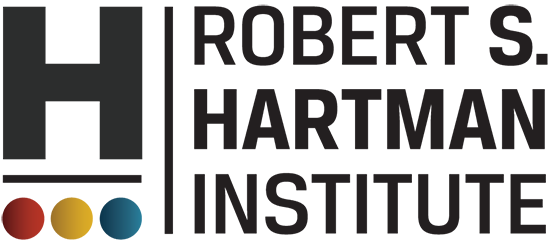Vera Mefford shares with the Robert S. Hartman Institute her reflections and insights on value based on the master axiological pattern. This guest post was submitted as a reflection after a Hartman Happy Hour session.
I attended a Hartman Happy Hour meeting a few days ago, and Chris Coleman, the presenter, made the statement that I=E=S was the highest level achievable. Several attendees did not seem to understand this and had questions that amounted to “We thought I>E>S was the best! Now, in Hartman’s hierarchy of value, it is certainly true that the Intrinsic contains the richest number of properties, the Extrinsic contains the second most, and the Systemic dimension contains the least, most easily understood as Rem Edwards always defines it: People (I) are more important than things (E), and things are more important than ideas (S). And then, there is the Principle of Containment, that the Extrinsic contains the Systemic, and the Intrinsic contains both the extrinsic and the Systemic.
However, I=E=S on the MAP (Master Axiological Pattern) created by Dr. David Mefford, does not refer to the same thing and does not mean to express that the three dimensions of value are equal. The MAP presents this algorithm in an entirely different context. Let me explain. When Dr. Dave was designing his dissertation in the 1980s together with his doctoral director, Professor John Davis who had brought Hartman to the University of Tennessee, they decided to work on an analysis of Bob Hartman’s binary value hierarchy and to complement it with a new three-dimensional hierarchy.
This three-dimensional hierarchy produced in Dr. Dave’s dissertation, Phenomenology of Man as a Valuing Subject, is a logic deduction of 13 forms of value or meaning using the three dimensions: systemic, extrinsic, and intrinsic, plus a relation of greater-than, less-than, or equal. His three-dimensional value hierarchy is based on the axiom of value created by Dr. Hartman. The logic underlying the value hierarchy was used to create a 351 cell frame-of-reference of scientific axiology, and the application thereof generated new models for our understanding of value and valuation.
The AXCES model identifies 13 integrated developmental levels, which are easily understood when applied to sales or leadership as progressive stages of development toward sales or leadership excellence. These stages can also be understood as value formation levels or engagement styles. The 13 patterns are not only directional but definitive as well. The axiological deduction, in the developmental sense, can also be interpreted as stages of learning, which should lead to excellence in any position, when followed in order.
For example, balanced integration (I=E=S) or excellence in leadership is achieved when the values of all dimensions are balanced and fully engaged: people, processes, systems & profits, with justice and integrity to ensure steady growth of the cohesive whole. A leader in this stage is responsive, dynamic, and accountable – to all and for all. This stage indicates openness for positive change in all dimensions. When all previous stages have been covered, the leadership of an organization has reached a point of stability – in a context of dynamic disequilibrium which must be continually adjusted and fine-tuned.
